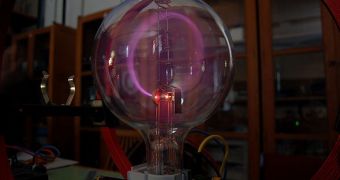In a development that could see major innovations being introduced to the computer industry, a team of investigators recently managed to produce the first plastic-based memory device that uses electrons to read and write data, rather the usual magnetic “1s” and “0s.”
The accomplishment could see the computer of tomorrow become a lot faster in terms of memory storage and retrieval. Computer employing the new generation of devices would also use less electricity, and would be more efficient in terms of overall performances.
The new memory device was produced by a team of experts at the Ohio State University (OSU). Details of the accomplishment are published in the August 2010 issue of the esteemed scientific journal Nature Materials, ScienceDaily reports.
What's even more important is the fact that the OSU group managed to produce the prototype plastic spintronic device by using nothing more than techniques already existent in the computer industry today. This is great news considering the prospective cost reductions that such a capability entails.
The development team that produced the new prototype was led by OSU Distinguished University Professor of physics and chemistry Arthur J. Epstein. He is also the director of the Institute for Magnetic and Electronic Polymers at the university.
He says that the plastic memory is in fact a thin strip of dark blue organic-based magnet, which is layered with a metallic ferromagnet. The entire ensemble is then connected to two electrical leads. A magnetic field controls the spin of the electrons within the advanced device.
“Spintronics is often just seen as a way to get more information out of an electron, but really it's about moving to the next generation of electronics. We could solve many of the problems facing computers today by using spintronics,” Epstein believes.
With the recent advancement, the OSU group believes that it may be soon possible to construct memory devices that are made entirely out of organic materials. Colleagues from the University of Wisconsin-Madison (UWM) also contributed to the work.
The study effort was funded with grant money secured from the US Air Force (USAF) Office of Scientific Research, the Department of Energy (DOE), the National Science Foundation (NSF), and the Office of Naval Research (ONR).

 14 DAY TRIAL //
14 DAY TRIAL //